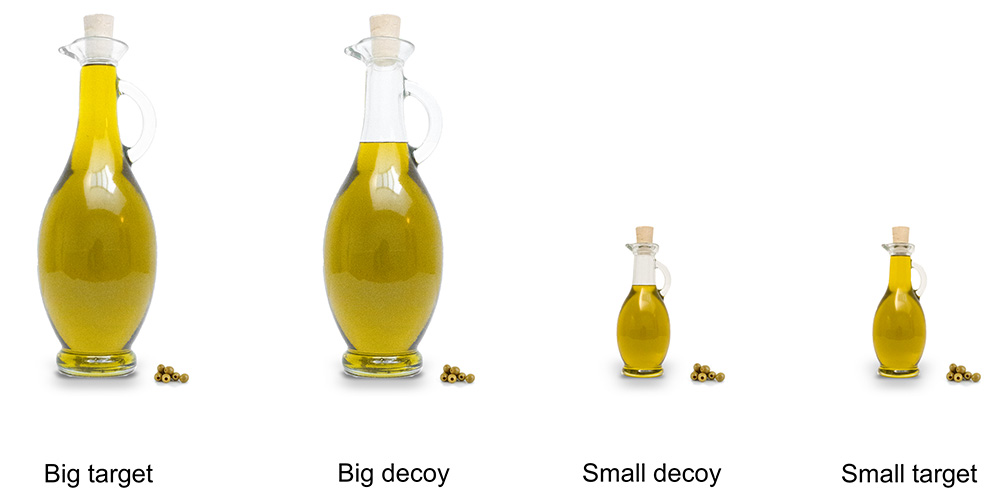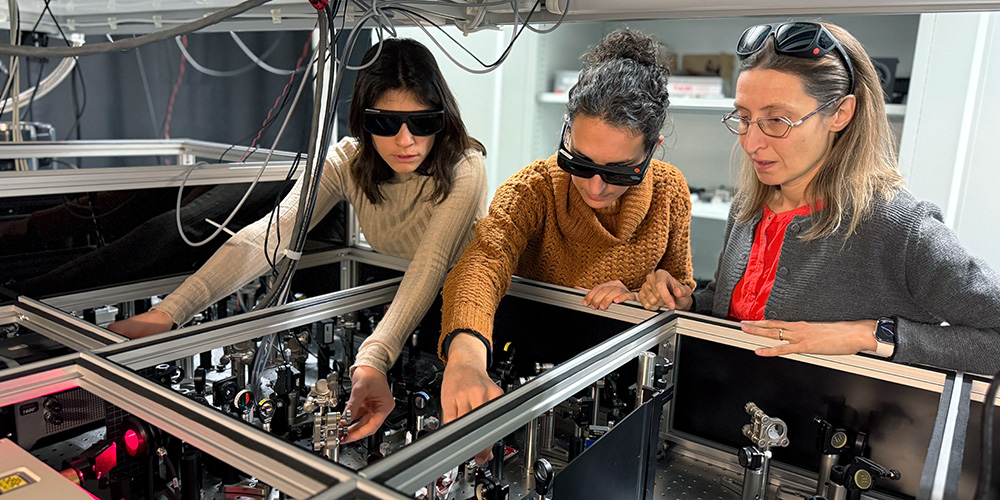Decoy products influence our decisions
When people have the choice between two products, a third option can influence their decision by shifting their focus. Researchers from the University of Basel have shown, however, that whether one object is preferred over another depends on which visual features are being used to form an opinion.
07 December 2022 | Noëmi Kern, Christoph Dieffenbacher
We know all too well that we can often be distracted by certain special offers as we shop. When “decoy” products influence our buying decisions, this is the result of a phenomenon known in psychology, economics and behavioral science as the “attraction effect”. This effect comes into play when a third, significantly weaker alternative is added to two existing choices. While this decoy itself has very little chance of being chosen, it increases the likelihood of us taking one of the other two by serving as an additional reference. The reason for this is that we group similar things together in one category, making it easier compare them with each other. The most attractive offer in the category wins out, at the cost of those options that do not fit into the category.
Or this is at least the case with objects that differ in terms of quantity or size – previous studies on the attraction effect focused on such numerical characteristics. “Under these controlled laboratory-like conditions, the effect was very stable,” says C. Miguel Brendl, Professor of Marketing at the University of Basel. So far, the attraction effect could not be transferred to visual criteria. “We know from tests that the attraction effect also occurs in animals, despite them not being aware of words or numbers; they decide purely on the basis of criteria that involve their other senses, including visual perception. We wanted to know how this is with humans,” continues Brendl. Ultimately, he adds, the goal is to answer the fascinating question of how decision-making processes actually work.
In various experiments, Brendl and his team at the Faculty of Business and Economics at the University of Basel studied how humans choose, on the basis of visual aspects, between various products presented to them in the form of images. It became apparent that it makes a difference whether the criteria are quantitative or qualitative. The researchers have reported on their findings in the journal Psychological Science.
Attraction becomes repulsion
In an online survey, around 1,500 people were asked to choose between a large and expensive bottle of olive oil and a small, cheaper one, both filled to the brim. An additional bottle was then added to the selection. In one case this decoy corresponded to the bigger bottle, and another time to the smaller one, but always contained less oil than its counterpart. In both experiments, the proportion of subjects choosing the same-sized bottle that contained more oil increased significantly. The way in which the various bottles of oil were arranged in relation to each other did not affect the decision.
In another experiment, 1,500 participants had to choose between two scarves that were visually different, both in terms of pattern and color. Here, however, the decoy did not increase the chances of the similar product – on the contrary: when a third scarf was added that was similar to one of the two, not only was the attraction effect eliminated, but it was even transformed into a “repulsion” effect. The scarf that resembled the decoy now had significantly poorer chances.
While in the case of the olive oil, the decoy increased the perceived value of the product similar to it, the scarf that was similar to the decoy became less attractive. An unexpected result for the researchers. “We had expected the attraction affect to disappear, but not to be reversed,” says Brendl. He thinks it is possible that the study participants saw the two similar products as being even more similar to each other, and thus perceived the product similar to the decoy somewhat more negatively. The attraction effect known from previous studies involving numerical attributes can thus only be replicated for quantitative visual features, but not for qualitative ones.
Decisions are not purely rational
The researchers attribute this contradiction to the difference in perception between quantitative and qualitative aspects: the quantitative features of the products – such as the volume and price of the olive oil – allow for comparison on just one internal magnitude scale. This scale makes it easier to identify differences. If, on the other hand, the respondents were required to compare goods with different qualitative characteristics – scarves of different colors, for example – there was no such internal scale.
It is not yet clear why a decoy can have such different effects. Also, the findings can only be transferred to the real world to a limited extent, as the surveys were conducted online and not in the field. The participants were not shown real products, but were asked to choose based on images. In addition, the objects were deliberately simplified and had only two attributes that could influence the decision. Everyday objects are much more complex – and usually combine quantitative visual attributes with qualitative aspects. Olive oil bottles not only have a specific capacity, but also have different shapes, brands or labels, and these also influence people’s choices. “Our results underline how malleable and context-dependent many of our decisions are,” comments Brendl. “Our decisions aren’t purely rational.”
Original publication
C. Miguel Brendl, Özgün Atasoy, Coralie Samson
Preferential Attraction Effects With Visual Stimuli: The Role of Quantitative Versus Qualitative Visual Attributes
Psychological Science (2022), doi: 10.1177/09567976221134476



